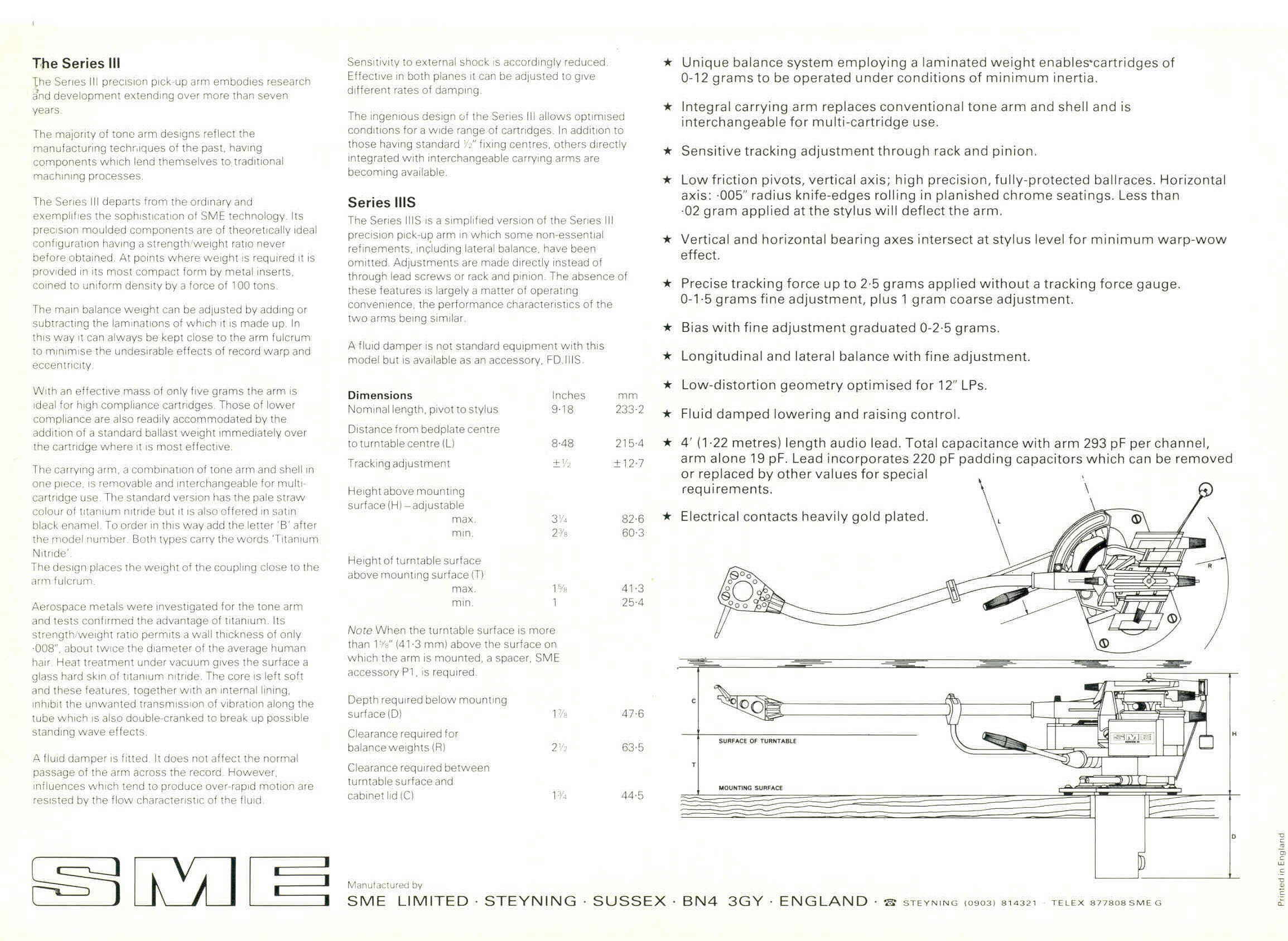
In addition die-casting would allow the numerous changes of section required to optimise effective mass and control standing wave effects. 36% lighter but only 25% less stiff than commonly used aluminium, a magnesium arm of the same mass could be as much as 25% stiffer. A one-piece die-casting in magnesium alloy was therefore adopted comprising the shell, tube and balance weight cantilever.
#Sme tonearm serial numbers series
Doubling the diameter will make it eight times as stiff.Īlthough the proportions of the Series V tone-arm reflect these facts, tests showed that the required stiffness was still unattainable using conventional fabricated construction. In a beam of given length stiffness is dependent on the material used, its cross-sectional area and in the case of a cylindrical beam increases as the cube of its diameter. Infinite stiffness would be ideal but we have to be more realistic. Stiffness, the second part of the equation of force, must therefore be used also. Very high tone arm mass would therefore be ideal to control the cartridge had it not to be strictly limited to preserve the required relationship of compliance and mass already referred to. The stiffer the arm the less it will flex and vibrate the more massive the less it will vibrate. Damping alone cannot prevent flexing or vibration, it can only lessen its effect. Mass and stiffness determine how much a pick-up arm will flex and vibrate and damping determines how long it will vibrate. The total equation of force acting on a pick-up arm is therefore the sum of three parts: acceleration acting on the mass, velocity acting on the internal or applied damping, and bending or deflection acting on the stiffness. Here motion means velocity and without it there is no damping. The third property is damping or resistance to motion. It is a restoring force, proportional to position or deflection. The second property is stiffness which resists bending or flexing. The transition point between these two conditions is important for a clean low frequency response and is established by the compliance of the cartridge and the total effective mass of the arm and cartridge body. At audio frequencies however the increased resisting force causes the armature to move relative to the stator and a signal is produced.

At subsonic frequencies the armature and stator move as one allowing the slow movements needed to negotiate the record surface without generating a signal. It is this resisting force which makes the operation of a cartridge possible. The effective mass of an arm and cartridge resists motion least at low frequencies but increasingly as frequency rises. The first property is mass which opposes any change in motion.

In common with any mechanical device the behaviour of a pick-up arm is governed by three properties of matter that also define the laws of motion. The following notes will help a better understanding of the problems and how they were resolved in this radically new design. The result is a subtle loss of clarity, dynamic range and transient attack that can make the sound from even the best system tiring to listen to. Unless the pick-up arm holds the latter against even the minutest movement at audio frequencies the signal will be modified in some way. Reproduction can only be true therefore when all movement representing groove modulation is made by the armature to which the stylus cantilever is attached and none by the stator represented by the cartridge body. All cartridges employ relative motion between armature and stator portions of a generating system to produce the signal output. The functioning of a pick-up arm appears simple but is in fact very complex. It escapes the ‘LP’ sound and demonstrates that structural resonances in pick-up arms are responsible for much that makes vinyl records readily discernible from master tapes. The work took almost four years and the measure of its success is the acceptance of the Series V precision pick-up arm by technical experts and users as one of the world’s truly great audio products.Series V sound has an almost startling dynamic range and neutrality enabling high levels to be enjoyed.

SME engineers, recognising the potential of the latest complementary equipment, accepted the challenge to design and build a pick-up arm which unlike others in existence would make no detectable sound contribution of its own.


 0 kommentar(er)
0 kommentar(er)
